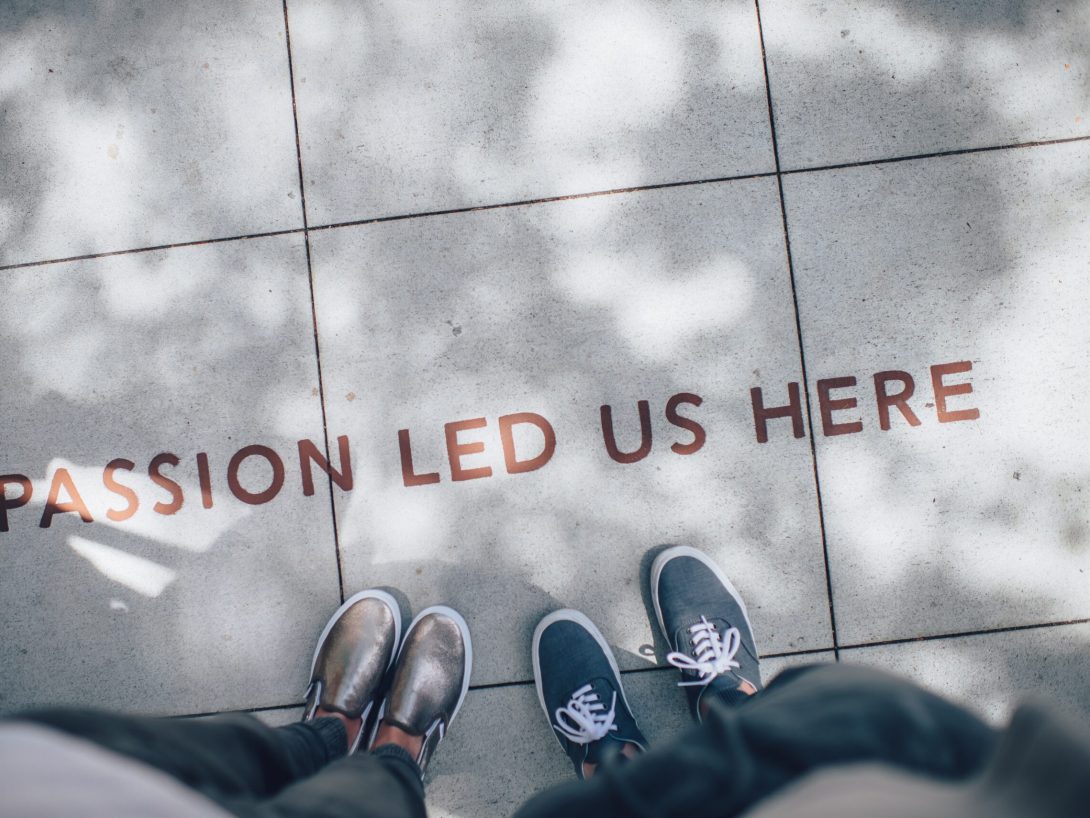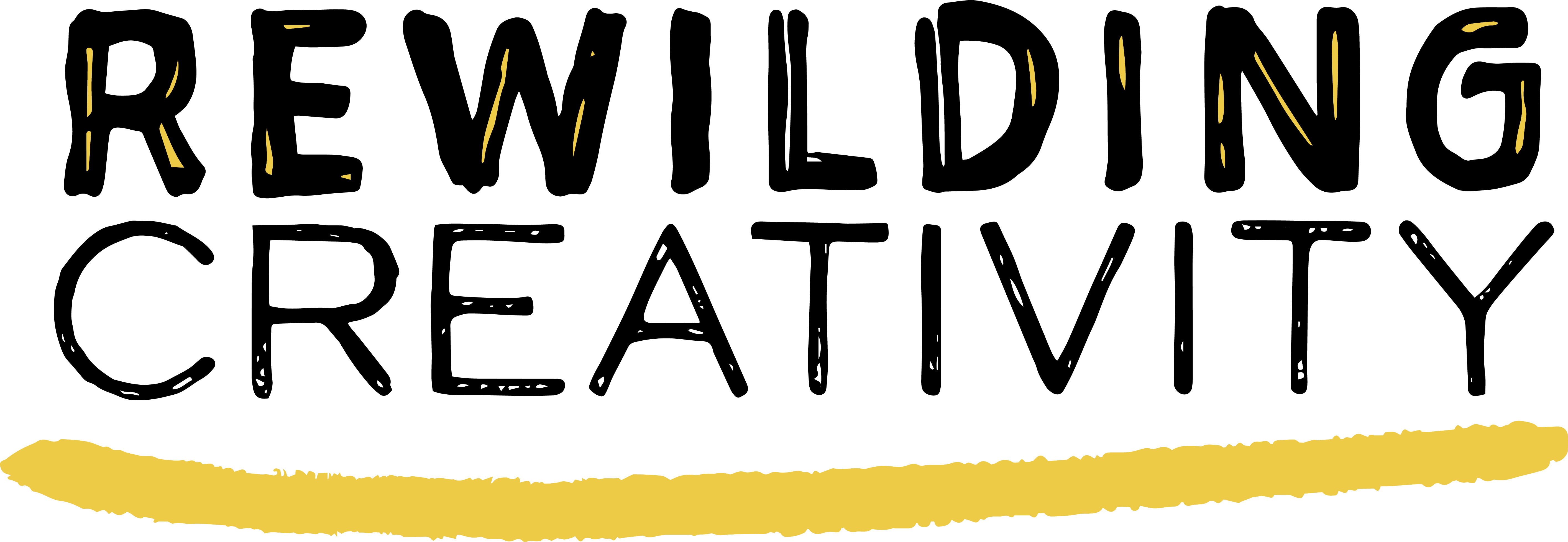
So you’re looking some ideas to help you “be more creative”?
Creativity is a very individual thing. It takes on many different forms and individual expressions, which means there's “no one size fits all” approach when it comes to creativity.
There are multiple ways to “be more creative”...
Even when we’re feeling foggy or stuck for days or weeks on end, there are ways to get ourselves creatively “unstuck”...
Try working in a NEW state!
For example, we try playing music while you’re writing to help tap into both hemispheres of your brain at once.
In fact, whatever makes you feel happy in your body and mind—practice doing THAT (whatever "that" might be) FIRST. Then, be ready to catch the new ideas as they start flowing in during your (unrelated) flow state. 😉
If you're not sure where to start, try one of these ideas to help increase the creative flow in your day....
Embrace uncertainty
Start by taking a chance—try something new and see where it leads you. The best way to be creative is not to know how things should come out; let life surprise you, sometimes!
That's why we start new projects without preconceived ideas of the outcome. There’s no predicting where our heart and brainstorms might lead us: we could end up designing costumes for squirrels or puppets instead of people (it happens!).
You can’t know for sure that you'll succeed or fail until you actually take a chance and try something new. What are you curious or excited enough about to risk failing?
Put your tech to work. For those moments when your mind is on fire but you can't quite seem to grasp the pen or pencil in front of you, try using a voice recorder to capture all that witty banter in your head. Turns out, the old adage "write it down" was pretty smart after all—in fact, writing things down may help us retain important ideas and information even better than typing them out (remember cramming for tests back in school? ). Using a pen & paper is the shortest route from our heart to hand, and recording our spoken word is a close second.
So next time you have an awesome idea while nursing a cup of coffee at Starbucks (guilty!), whip out your phone and get it all down—even if you can’t find a pen and paper.
Try a different point of view: think of an idea that nobody else would be able to see, and run with it. Creativity isn't alwasy about putting things together in unusual ways; it's also about looking at the same things in new or unusual ways. Let your mind wander and see if you can make new connections to old ideas.
Boost your energy: There is no such thing as a creative type. A workout before you sit down to write can boost your flow of creative ideas; it's not about the workout itself but the result the extra energy can yield, in terms of endorphins and clarity of mind.
Write It Down: Keeping a notebook on hand for those random ideas that come into your head isn't only practical, it can make you more creative. Writing things down gets old ideas out of your mind and onto paper, giving way to even more, NEW ideas!
Build on other people's ideas: Don't get too precious about what you're working on – you can always build on other peoples' ideas. Nothing is original, and as Austin Kleon writes in his bestseller Steal Like An Artist, "every new idea is just a mashup or a remix of one or more previous ideas."
Make Time: It's easy to think of creative people as workaholics who are constantly putting in long hours at the office, but that's not always true. The key to maintaining a high level of creativity is downtime, rest, and leisure time – if you don't gift yourself some time of peace and quiet, you might not find it as easy to come up with fresh ideas on demand. AND be sure to check out my article about my favorite self-care ideas for creators!
Get enough sleep and engage in light exercise (even just a short walk) before beginning a project. Moving your body can boost creative thinking, for sure. Next time your boss or teacher is looking for an “outside-the-box” solution, try taking a hike or having a dance party at your desk before diving into the possibilities.
Idea Dumping: One of the biggest challenges is coming up with ideas – just sitting and thinking about things can sometime result in writer's block. It helps to stop consciously thinking and trying to force ideas. Instead, write down everything that comes to mind every morning– no matter how silly it seems. Once you've cleared your mind and dumped all of your ideas onto some paper, you can go through and pick out the gems. It’s like a idea-treasure-hunt. 🙂
Reverse Brainstorming: Reverse brainstorming is great for figuring out how problems work – what isn't so great is when you get stuck trying to come up with an idea in the first place. Reverse brainstorming works best when there are constraints on an ACTUAL, existing idea. So if you're stumped with getting starting, try setting some basic constraints or rules for yourself to kickoff your reverse brainstorming or choose an existing brainstorming method like a word web, mind-map, category chart or thought-bubbles to get your ideas flowing.
Don't be afraid to make mistakes - they often lead to the best ideas or creative insights!
Have a rant: If you're out of ideas and need some inspiration then have a rant. Ranting can be therapeutic when it comes to getting your thoughts down on paper. Just let it all flow from brain to mouth without judgment about what might sound stupid or even how silly something is. Once you've stopped ranting, go back over what you said and wrote and look for ideas that stand out in the mire, expand on them and see where they lead. Just remember - there's no such thing as a bad idea so don't discount anything until it's been fully explored.
Use your resources: Resources like books, magazines, news articles and get yout find inspiration or ideas. If you can get hold of an old magazine, tear pages out and stick them in a folder to reference later, but don't use just one source and limit your creative options. Try mixing and matching ideas from all sorts of resources.
Break the rules sometimes. Your teachers and parents probably always told you to do things 'by the book', and sometimes (most of the time) they were probably right. But don't be afraid to break things down and break those old rules when you're looking for ideas because it can help dramatically. Take an idea that works and mix it with one that doesn't. This is an example of context and juxtaposition and can be super effective. Creativity is all about making associations when there are no obvious links between things so brainstorming different combinations of seemingly unrelated ideas could help spark your creativity.
Draw inspiration from things around you—nature, art, architecture, etc.
When you're stuck on a problem take a break and go do something else. SOMETHING NEW! When you come back to it later, the answer might just be popping out at you from somewhere unexpected.
Take time for yourself every day. Do something YOU enjoy doing, whether it's going for a walk or watching your favorite show. It can help to clear your mind and boost your mood so you're ready to take on the world (AND your projects) again.
Creative people need quality alone time. And learning to take care of yourself will allow you an opportunity to relax and recharge which is necessary when you want to be able to BE CREATIVE again tomorrow.
The keys to being more creative are not found in your conscious mind. It’s a collaborative effort from ALL the different parts of yourself—your body, mind, and creative soul. So if you want to be more creative, then take care of all of your-Self!
Whether you’re an artist, writer, entrepreneur or business owner—I’d love to know what strategies and activities work best for sparking your imagination! Do any of these ideas sound like they might do the trick?
Let me know how these ideas work for you!
